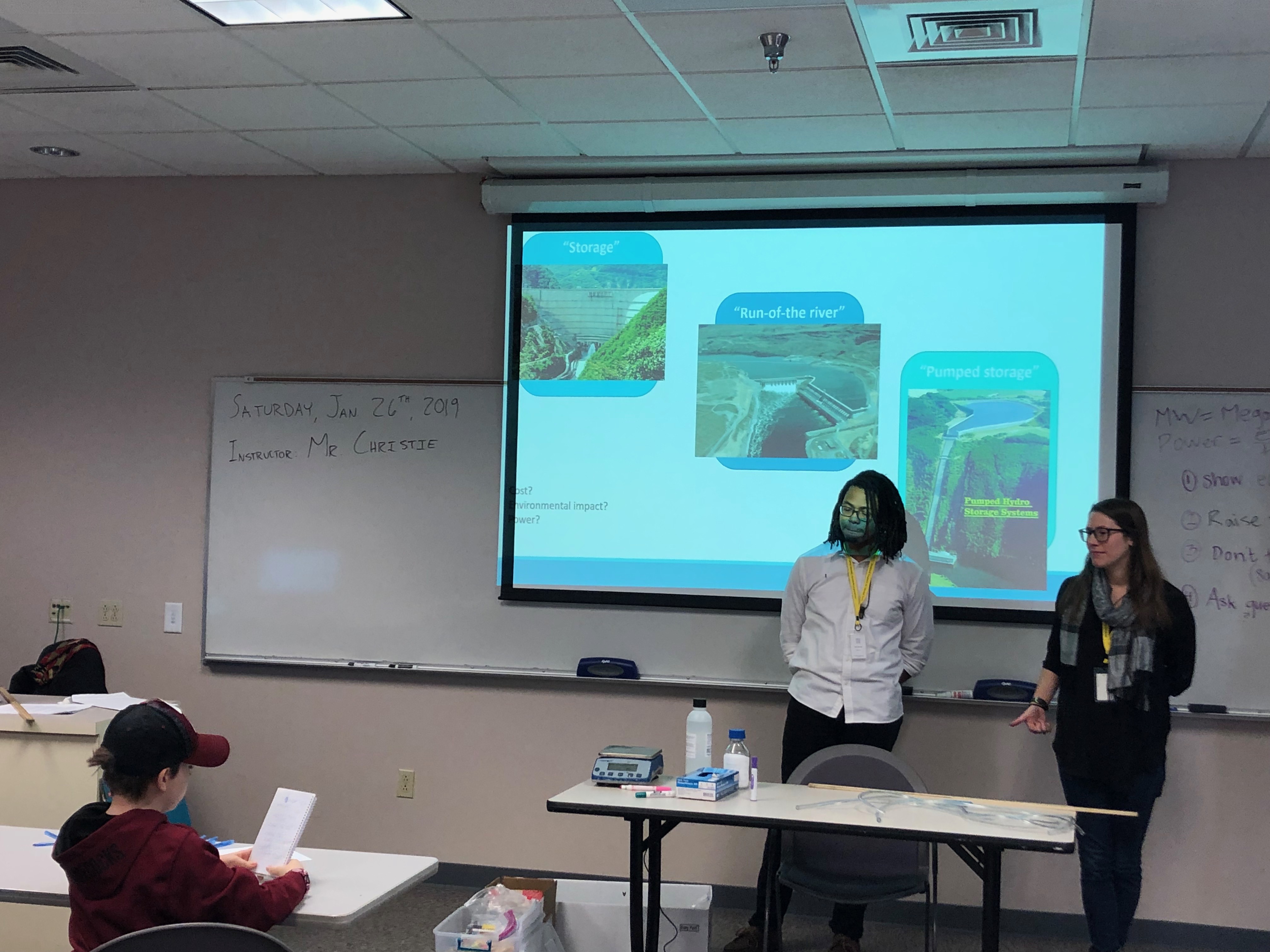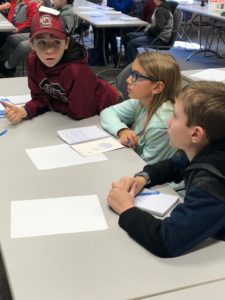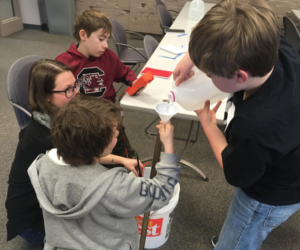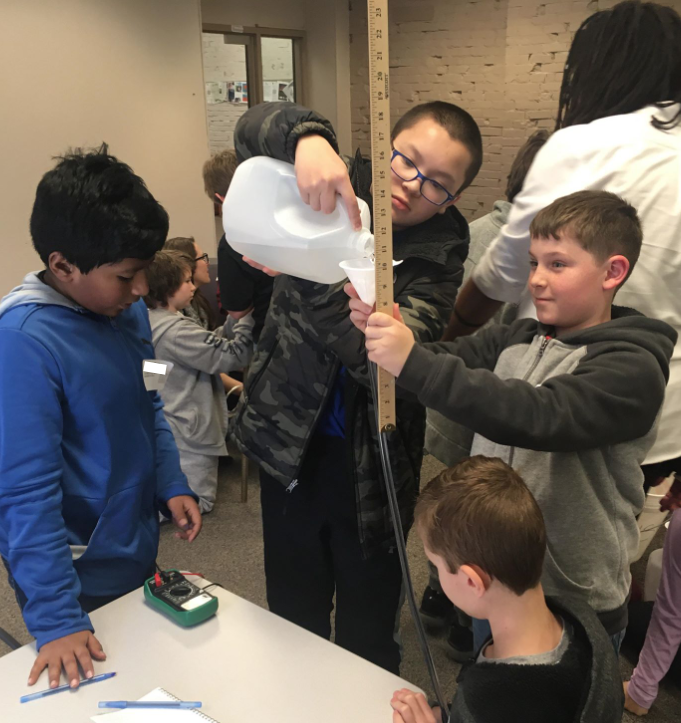Spring SAVY 2019, Day 1 – The Water-Energy Nexus (5th/6th)
Today was a great first class! I noticed a range of prior knowledge and we’re hoping to build on that over the course of the session. The students arrived around 9:15am. They sat with girls on one side and boys on the other at first, and some students clearly knew each other before this class. We encouraged everyone to get up and move into new pods to break students out of their comfort zone a bit. To set the stage for the day I started by playing a song on the ukulele to introduce the course *Water and energy, affects you and your family, if we use both responsibly, we can help our community*. I introduced myself and my research and the class were very curious about what I do every day in the lab. Over the next six weeks, we’ll talk a lot about my research, future directions for research, and the skills necessary to be successful in the field of engineering.
We started our learning by creating concept maps (with the heading “water-energy nexus” ) to see what everyone knew coming into the course. Then we watched a TED talk and discussed the mechanism by which bacteria can precipitate metal ions (electrostatic attraction), the adverse effects of hypersaline brine on fish (forward osmosis can cause their organs to lose water), and the important skills required to create successful and useful technology (biology, chemistry, cross-cultural teamwork). We then broke into small groups and had a debate to convince a “government” of the best method for producing energy in a new city with only one river/lake (storage dam, run-of-the-river dam, or pumped storage dam). After our debate, we talked through the scientific method and used an example of a broken toaster to illustrate each of the steps (question, hypothesize, experiment, observe, analyze, share). We then shifted our focus toward a hydropower activity and learned about the potential energy equation to facilitate our experiment (mass*g*height=PE). We calculated the potential energy achievable at each height (about 10-40 J from 0.25-1.0 m for 1 gallon of water), then we conducted our turbine experiment. After recording our data and discussing results, we departed for the day.
It was a quick first day but I’m looking forward to diving back in where we left off next Saturday. Have a great week!
Kofi
Photos From Our Day




